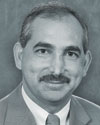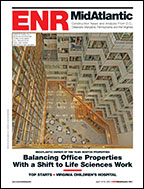Houssam “Sam” Sleiman always knew he would be an engineer. In his birthplace of Lebanon, the medical and engineering fields were the top two most respected choices, and, “I didn’t want to be a doctor,” chuckles the director of capital programs and environmental affairs for the Massachussetts Port Authority.

But after working in a variety of roles in both public and private sectors, Sleiman discovered his true love aside from his wife of 26 years: airports. “I got bit by the aviation bug. Once you get bit, that’s it,” he says. “You get so hooked on airports and the intrigue of the business. You’re building facilities that serve millions of people a year. What makes it rewarding is that everything you do is for the greater good—not just designing something for a developer who is just there to make money.”
This love of public service also prompted Sleiman to embrace environmental issues, which ultimately led to the first U.S. runway fully using warm-mix asphalt. The 7,000-ft-long, 150-ft-wide runway at Boston’s Logan International Airport was completely repaved with WMA, which produces nearly 4,000 fewer tons of carbon-dioxide emissions than traditional asphalt, about 400,000 fewer gallons of diesel fuel and an energy savings of about 53 billion BTUs. The mix has been used in Europe, but the Federal Aviation Administration didn’t have a specification for it. “We brought the FAA in. They liked it and allowed us to [use it] on the runway,” he says.

Massport’s director of capital programs pushed hard, convincing FAA officials to allow using warm-mix asphalt to pave a Logan airport runway.
Sleiman credits Massport’s board and leadership with encouraging green “firsts.” Its Terminal A was the world’s first certified “green terminal”. Now, light-emitting diodes are being installed on a parking garage with a 200-kw solar power system. “It will reduce electricity consumption by over 55%,” he says. Logan also was the first airport to test small wind turbines on a building’s roof. “If we don’t allow technology to be tested in a real environment, it will always be theoretical,” he says.




Post a comment to this article
Report Abusive Comment